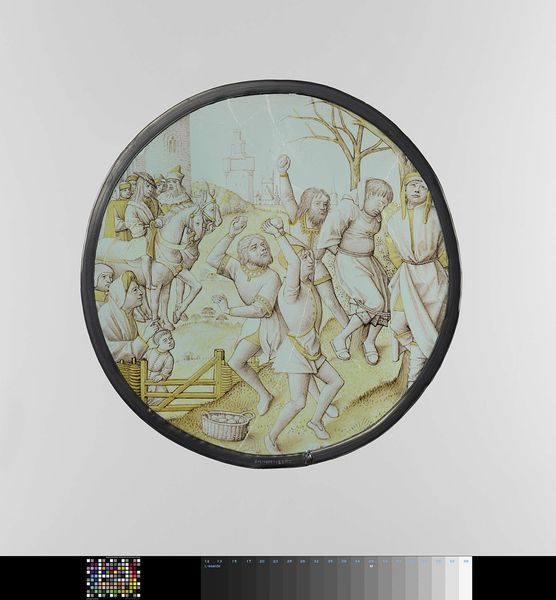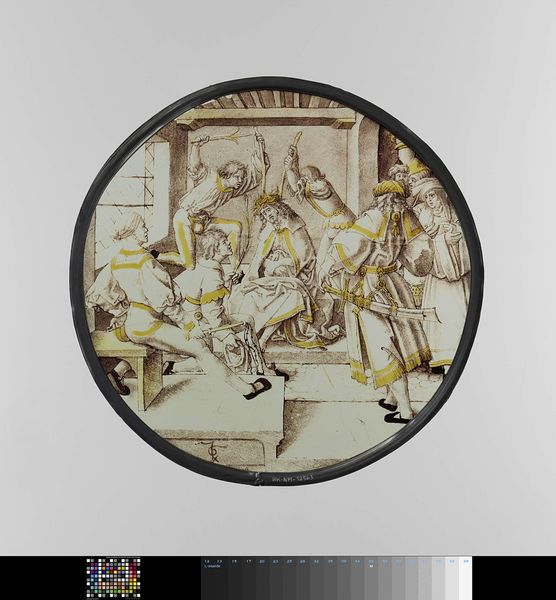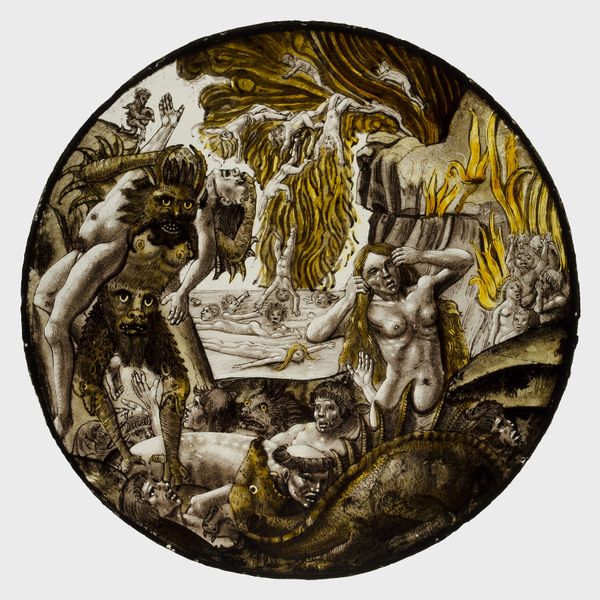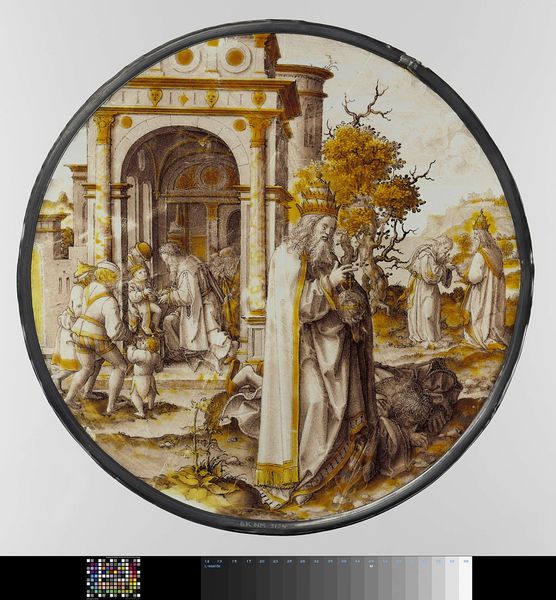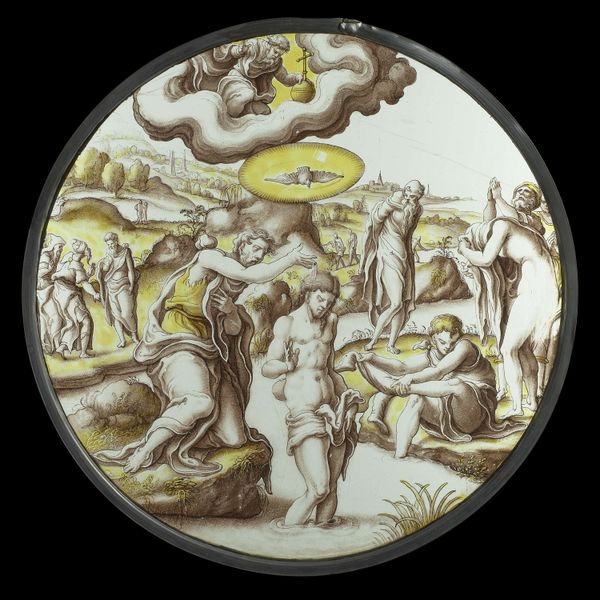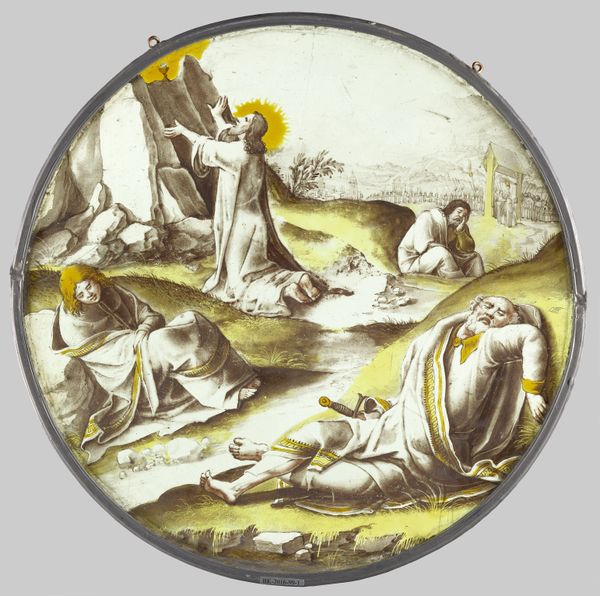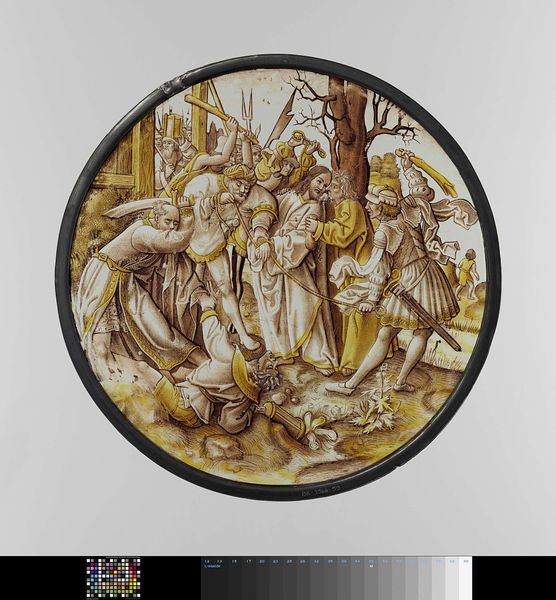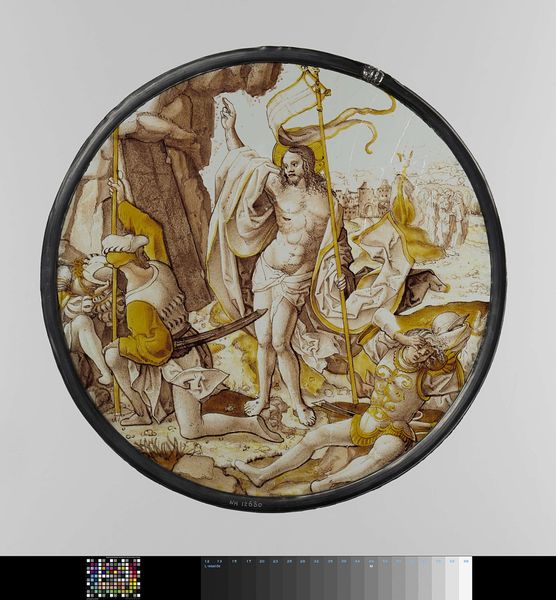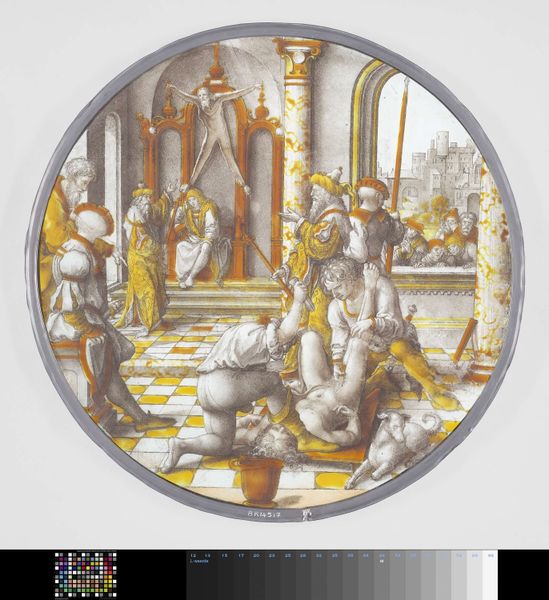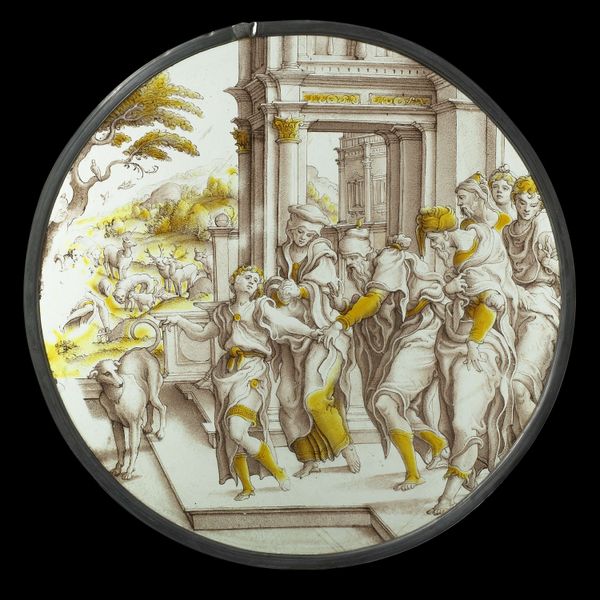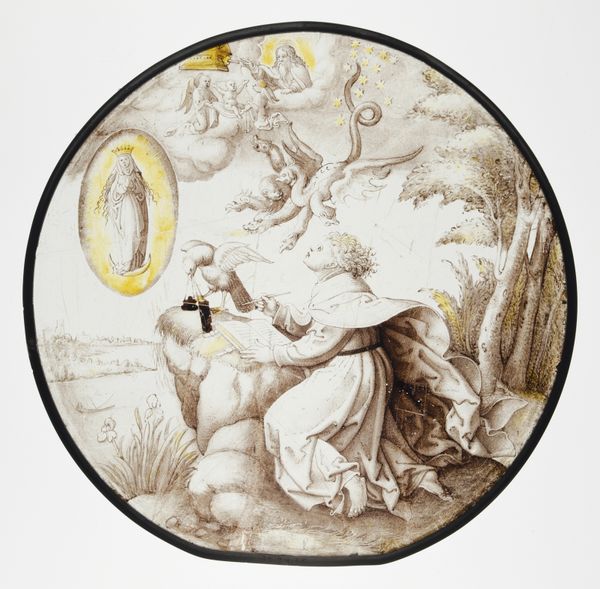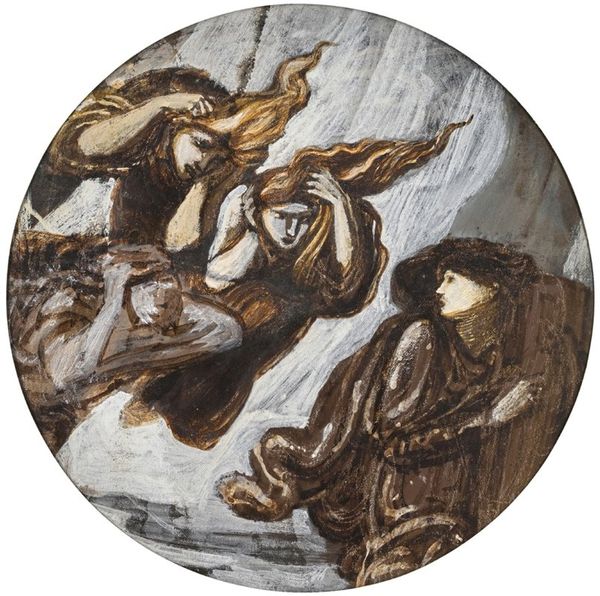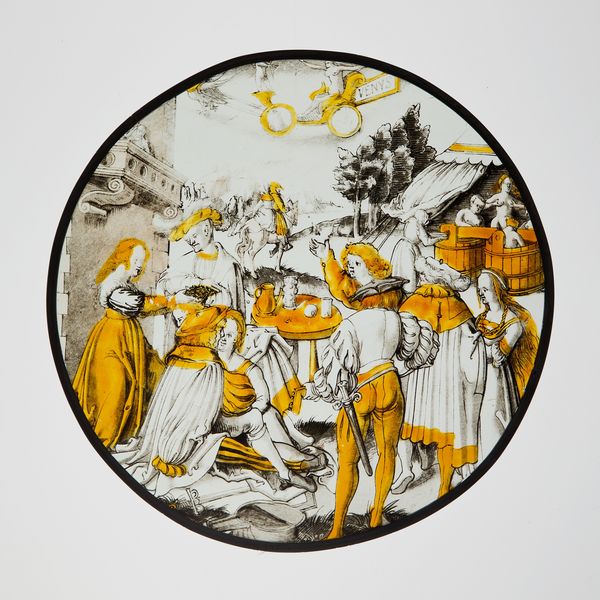
painting
#
painting
#
landscape
#
figuration
#
framed image
#
black colour
#
history-painting
#
italian-renaissance
Copyright: Rijks Museum: Open Domain
Editor: So this is “Saint John the Baptist Preaching in the Wilderness,” painted around 1540 by an anonymous artist. It’s currently hanging in the Rijksmuseum. I'm immediately struck by its circular composition and almost monochromatic palette. How should we interpret this artwork? Curator: Focusing on the materiality, note the painting itself. The act of applying pigment to create a scene. Look at the landscape, it's a fabricated scene that invites a dialogue on labour – what's made in relation to consumption, no? How does its function and accessibility contribute to its cultural value and our understanding of production within this period? Editor: Interesting! The landscape almost feels like a backdrop, stage-managed to present John the Baptist. Curator: Precisely. It pushes us to examine how the setting influences our reception of the narrative. Where does the anonymous artisan position himself in relation to labour and the patronage of making this painting? What specific cultural forces shaped this artistic process? Editor: That’s making me rethink the whole piece. I was so focused on the figures themselves and the religious narrative, but it's fascinating to consider the anonymous labor. Curator: Think about it. The preparation of materials, the application of the paint, it speaks volumes about the social context of art creation at that moment, don’t you agree? Editor: Yes, absolutely! It shifts the focus from simply depicting a religious scene to considering the socioeconomic factors that shaped its creation and what that means in our experience of consumption today. Thanks! Curator: Glad we could consider the socio-historical conditions that facilitated art's production.
Comments
No comments
Be the first to comment and join the conversation on the ultimate creative platform.
